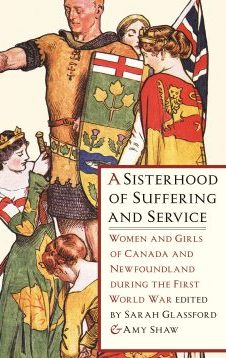Canada never saw such an upheaval as the First World War. Income tax, trade unionism, votes for women, national health, Canada Savings Bonds, public pensions, federal regulation of industry, liquor controls – each is a legacy in its own right. Yet all were born in four electric years of struggle.
Only in recent decades have researchers documented this whirlwind in a succession of excellent books capturing the war’s impact on national life. A Sisterhood of Suffering and Service is a welcome addition.
The conflict shattered every preconception of women’s role in Canadian life. As Lucy Maud Montgomery put it, “The women who bear and train the nation’s sons should have some voice in the political issues that may send those sons to die on battlefields.”
Before 1914 bank tellers and office secretaries were exclusively male preserves. It was unthinkable that a woman would drive a truck or punch tickets on a streetcar. It was unlawful that any women would serve in any legislature.
“I don’t know what is the work of women and what is the work of men,” said Roberta MacAdams, a nurse elected to the Alberta assembly in 1917. “I don’t think we’ll be able to straighten it out again.”
By 1921 the number of women in the workforce was up by one-third. Women served in four legislatures, and the cabinets of British Columbia and Alberta, and the House of Commons.
A Sisterhood of Suffering and Service tells fresh stories of those astonishing years. Readers encounter new characters like Newfoundlander Margaret Davidson, who organized the Women’s Patriotic Association that raised $500,000 for soldiers’ aid – the equivalent of $7 million today — and William Fraser, a drugstore novelist who conceived of a Silver Cross medal for mothers who lost sons in battle.
“He wanted Canada to be the first country to create a medal of this kind,” and was, in 1919. And there was Edith Monture, the first and only woman from the Six Nations Grand River Reserve near Brantford, Ont. to enlist as a nurse overseas. Monture lived to 106 and for years was the only woman on the reserve who could vote since the Military Service Act granted nurses the ballot.
Editors Sarah Glassford and Amy Shaw write, “When Canada and Newfoundland went to war in 1914, for better or for worse their entire populations went to war with them.” One vignette captured the transformation of those years.
In Holt’s Canadian Encyclopaedia of Etiquette pre-war edition, widows were prescribed a meticulous observance of mourning: a black veil to be worn for a month, no social contact of any kind for six months, black dress to be worn for 18 months.
And the postwar etiquette guide? “Rules regulating the trappings of woe are being relaxed more and more,” wrote Holt’s Encyclopaedia. “Many ladies of unquestionable taste and discretion now content themselves simply with wearing clothes that are black and have given up the rather ostentatiously funereal crepe.”
They had no time. By then, Canadian women were helping to run the country.
By Holly Doan
A Sisterhood of Suffering and Service: Women and Girls of Canada and Newfoundland during the First World War edited by Sarah Glassford & Amy Shaw; UBC Press; 356 pages; ISBN 9780-7748-22572; $37.95






